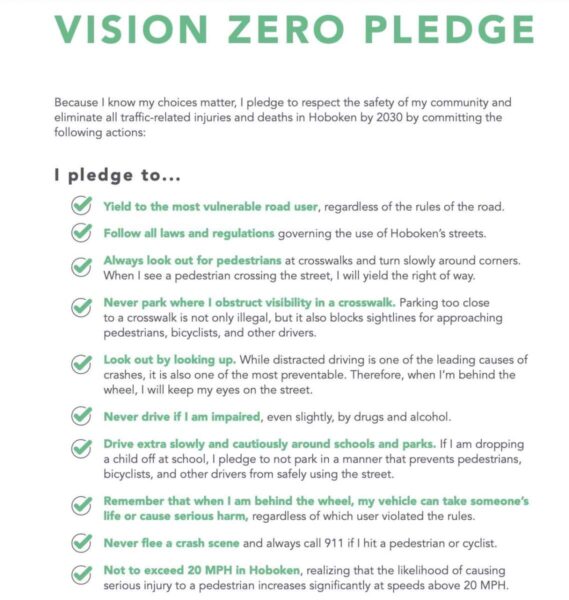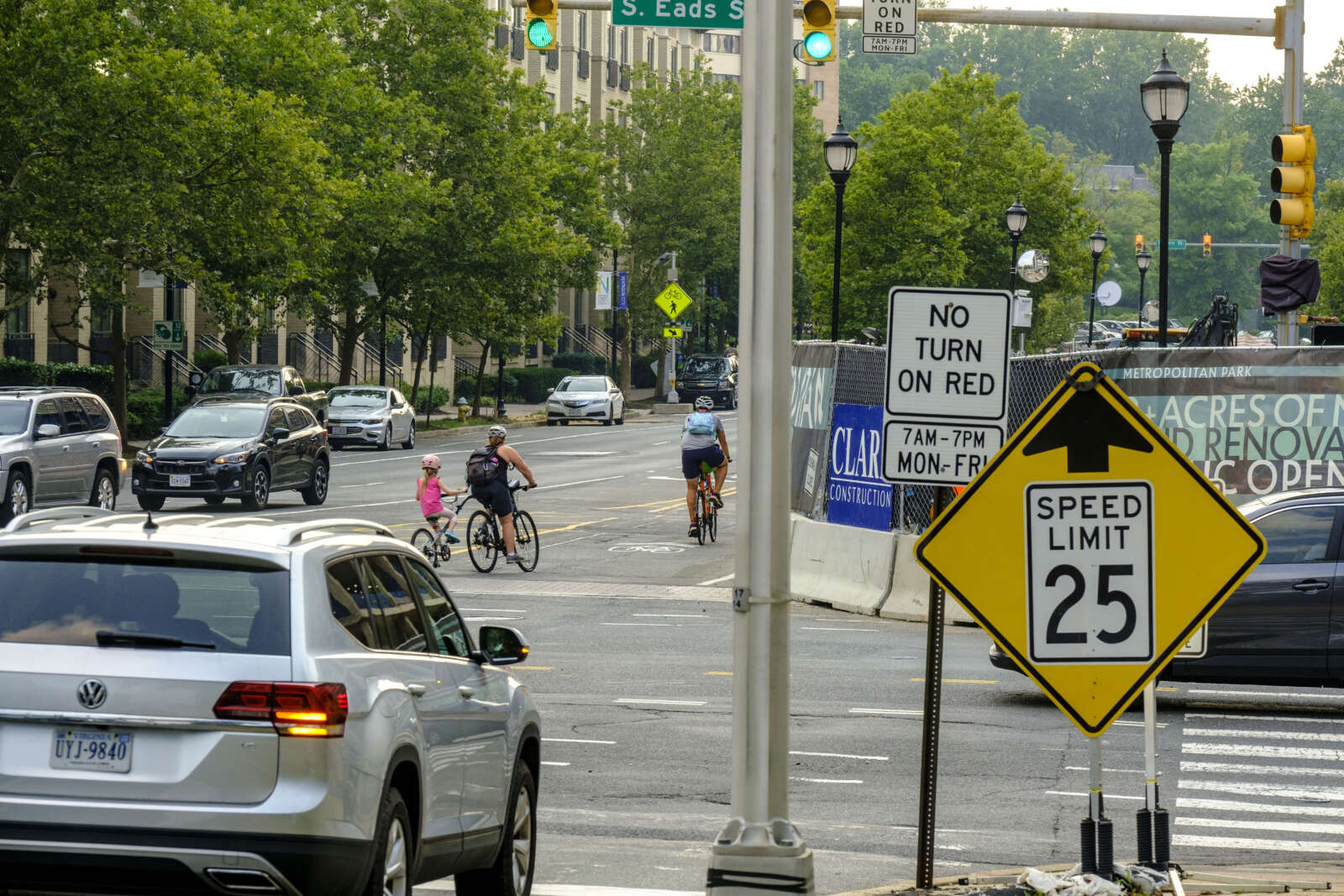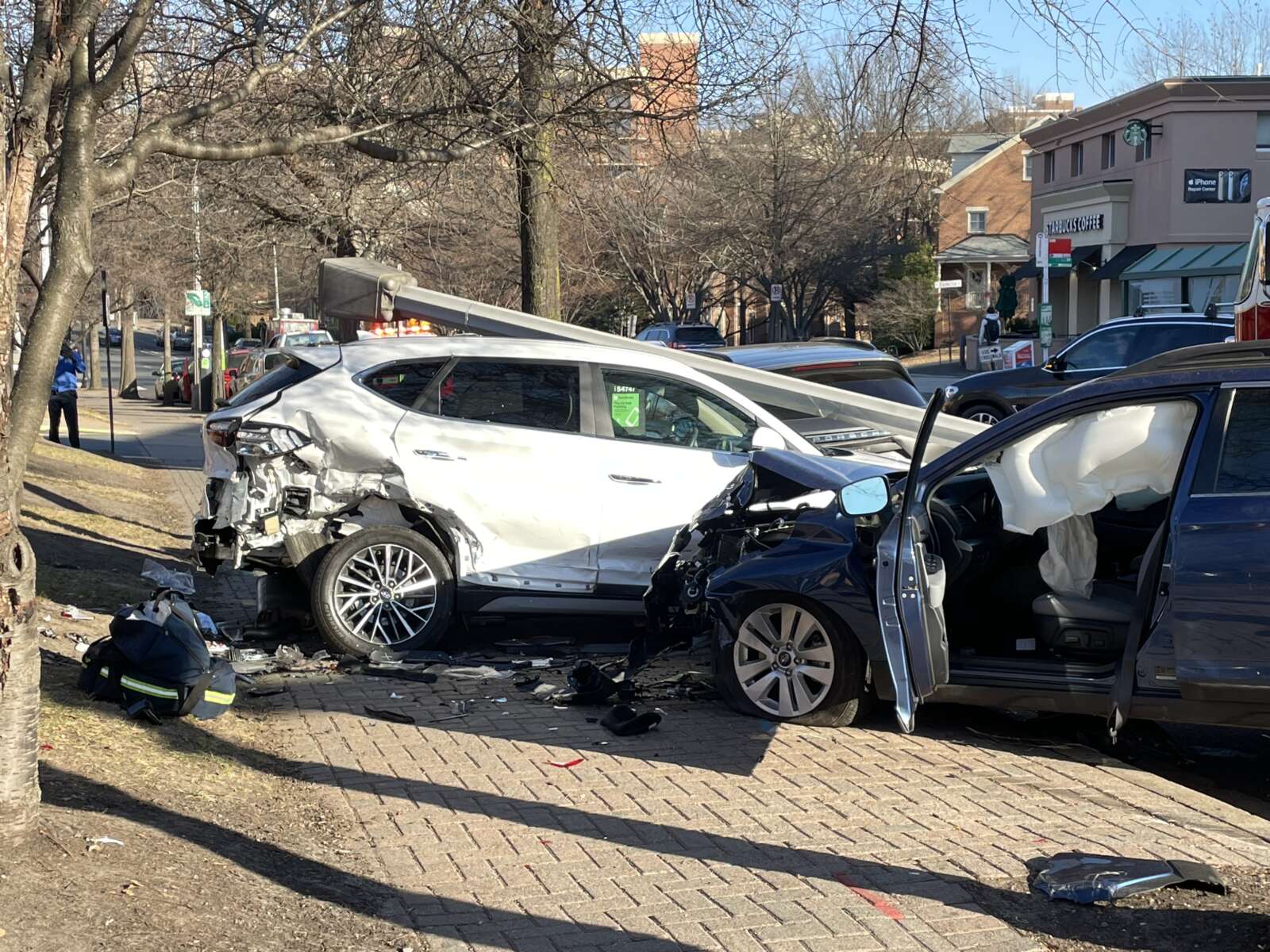Arlington: a highly educated and affluent riverfront county looking over D.C. Some say it has a kindred spirit in Hoboken, New Jersey, described as a “vibrant, walkable” city with waterfront views of New York City.
What makes Hoboken walkable seems to also make it safe for pedestrians. For the last four years, the city has not logged a single pedestrian death.
The trend drew the praise of U.S. Transportation Secretary Pete Buttigieg, whose department released a national plan in January to reduce and eventually eliminate thousands of road deaths.
Arlington, like Hoboken, has adopted a Vision Zero plan to eliminate traffic-related serious injuries and deaths by 2030. The county saw seven deaths between 2018 and 2020, and — depending on the exact location on the D.C./Arlington dividing line — one death in 2021. So what can Arlington and its 26 square miles (population ~237k) learn from the “mile-square city” (population ~53k)?

Hoboken transportation planner Gregory Francese credits the city’s success to Mayor Ravi Bhalla’s top-down, interdepartmental approach that involves residents. He says Hoboken regularly tackles challenging roads with temporary fixes that are made permanent later.
But the city wasn’t always pedestrian-friendly, he said. Cars could park up to crosswalks, which were faded, and intersections were in poor condition.
Those conditions began to change through repavement projects under the last mayor, and the work accelerated under Mayor Ravinder Bhalla when he established a Vision Zero task force, made of department leaders and residents.
“A big part of Vision Zero is removing the silos between transportation, enforcement [and other departments],” Francese said. “It takes someone who can remove those silos to unite people around Vision Zero.”
Planners test out quick, cheap and temporary solutions to find creative solutions to Hoboken’s main challenge: fitting safety improvements on narrow roads while balancing driving and parking needs. He said this approach translates well to bigger cities.
Like Hoboken, Arlington’s Vision Zero initiative has improved county government-wide cooperation, project manager Christine Baker said.
“The Vision Zero program has truly allowed County staff to place a spotlight on safety for all transportation-related projects and programs,” said Baker. “Our staff are coordinating interdepartmentally in a way that we have not in the past, which has streamlined the ability to get safety improvements on the ground.”
County staff map crash locations and respond with quick-build or capital improvement projects and pilot programs. The Arlington County Board, meanwhile, is setting policy. It has voted to further limit speeds and install speed cameras around schools and road construction areas, as a change in state law recently allowed.
Local transit and safety advocates say the county is on the right track but can still take notes from Hoboken.
Bicycling enthusiast Gillian Burgess picked up on Bhalla’s top-down approach. She also said Hoboken has more concrete actions and deadlines that are easier for the public to find and read, and the city’s emphasis on encouraging drivers to be more careful is front and center.
“When you have good leadership and concrete plans, you get something done,” she said. “We need the County Manager and the County Manager’s office and leadership at the Department of Environmental Services to take more ownership.”
Pedestrian safety advocate Pamela Van Hine says both localities are doing the same projects — like installing protected bike lanes and bump-outs and repainting crosswalks. And unlike tiny Hoboken, where the widest road is two lanes in each direction, Arlington has to tackle safety on crash-prone, multi-lane roads like Route 1, Langston Blvd and Route 50.
One difference, she says, is that Arlington’s plan is staff-driven and involves the community less. In Hoboken, Vision Zero ambassadors tell their neighbors about the program and a few residents sit on the city task force. Arlington has an external stakeholder group, but Van Hine says it does not feel like participants play an active role in decision-making.
“I love the Vision Zero project and I was one of the people pushing for it several years ago,” she said. “Staff are trying to do the right thing, but getting better community involvement and engagement is an ongoing issue.”
Arlington opened a new engagement opportunity last Monday. Locals can describe unsafe road conditions and crashes they have been in via an online feedback form, open through March 28. It will reopen around this time every year to track how experiences change over time and see if Vision Zero is improving safety.
“All of this feedback helps us to understand where were are doing well in terms of safety and where we need to improve,” Baker said.
Baker says the survey is being promoted via email, on social media and the county website, and through Arlington Public Schools, the police department and community groups. The county will place bilingual lawn signs in public locations, mail postcards to and host pop-up events in harder-to-reach areas, provide print copies with prepaid postage at Central Library and Columbia Pike library and host focus groups with those most impacted by crashes.
All year long, residents can use the “Request for Service” tool to notify staff of transportation issues or reach out to staff directly. Public meetings with speaking opportunities and annual and mid-year progress reports are held in May and December.
Meanwhile, staff meet every quarter to review severe crashes.
“Some of the recurring themes with these severe crashes are alcohol use and unexpected and unintentional errors,” Baker said. “While we’re highly focused on improving our road designs to reduce the potential for human error, it’s still really important that people pay 100% attention while driving and always drive sober.”
Those and other driving behaviors, like fleeing a crash scene, are included in a pledge, says Francese. COVID-19 cut short its promulgation at about 113 residents, but the city plans to distribute it more broadly by having drivers sign them when they apply for parking permits.

Burgess says Arlington can follow Hoboken’s lead in reminding local drivers they play an outsized role in road safety.
“Look how they talk about driving,” she said. “Arlington does not go out of the way to say that driving is the danger and we need to do it less. Until we get there, I’m not sure we can get to where Hoboken is.”




